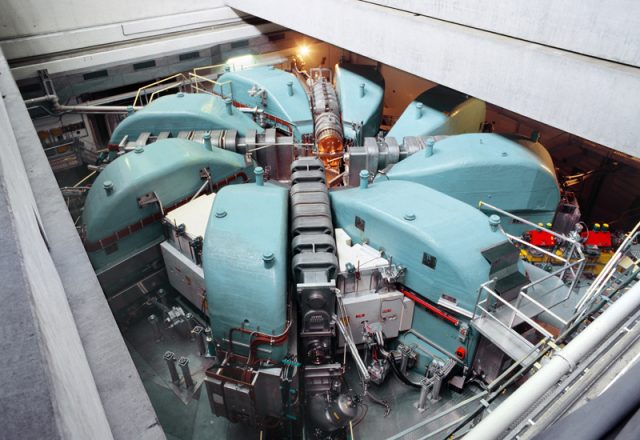Hydrogen made with muons reveals proton size conundrum
Ars Technica » Scientific Method 2013-01-24

How big is a proton? Unlike an electron or neutrino, which are fundamental particles that behave like points, a proton is a messy collection of quarks, gluons, and virtual particles that occupies what should be a measurable amount of space. And just how much space can be rather significant; as the authors of a new paper on the proton's size put it, "The proton structure is important because an electron in an S [ground] state has a nonzero probability to be inside the proton." (Emphasis ours.)
And, within experimental error, various measurements of the proton's size have all put it about 0.88 femtometers (an fm is 10-15 meters). But a team of researchers, working at a particle accelerator in Switzerland, has found a different way of measuring the proton's size: put a muon—a heavy, unstable, relative of the electron—in orbit around a proton. The resulting atom, called muonic hydrogen, can be measured during the brief time it exists before the muon decays. Those measurements have produced a new, very high-precision value for the proton's radius. Just one small problem: it differs from the other measurements by nearly seven standard deviations.
The paper describing these measurements, published in today's Science, does a nice job of illustrating how measuring the emissions of simple hydrogen atoms has a profound effect on physics. The fact that hydrogen only emits or absorbs specific frequencies as its electrons hop between orbitals was critical to the development of quantum mechanics. Better precision measurements revealed that many of these absorption or emissions lines were actually two closely spaced frequencies; that provided experimental validation of the Dirac equation. Small deviations from this equation eventually helped trigger the development of quantum electrodynamics.
Read 7 remaining paragraphs | Comments